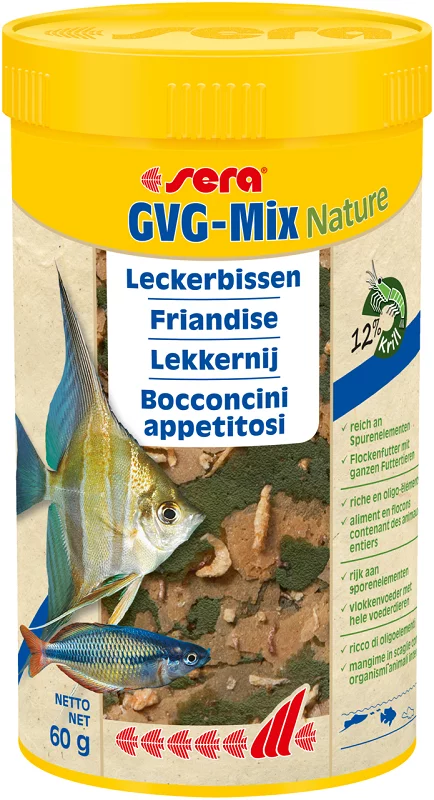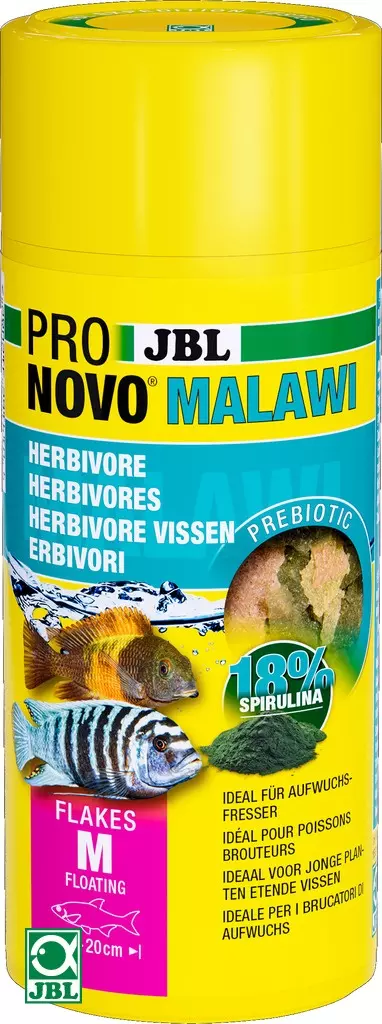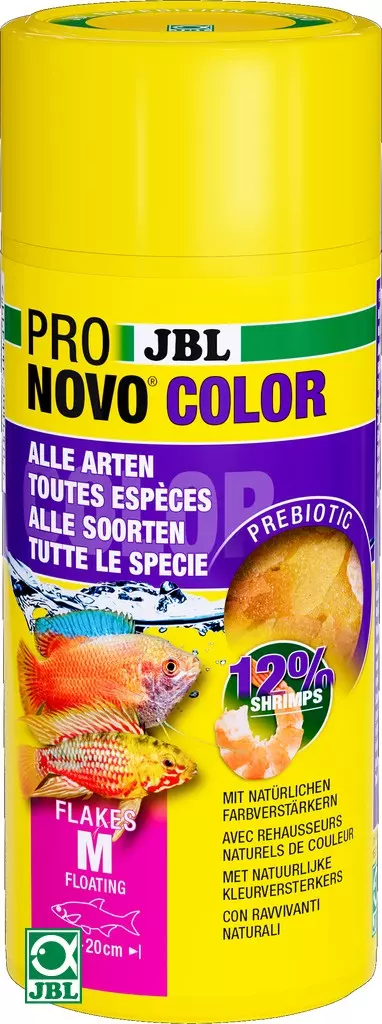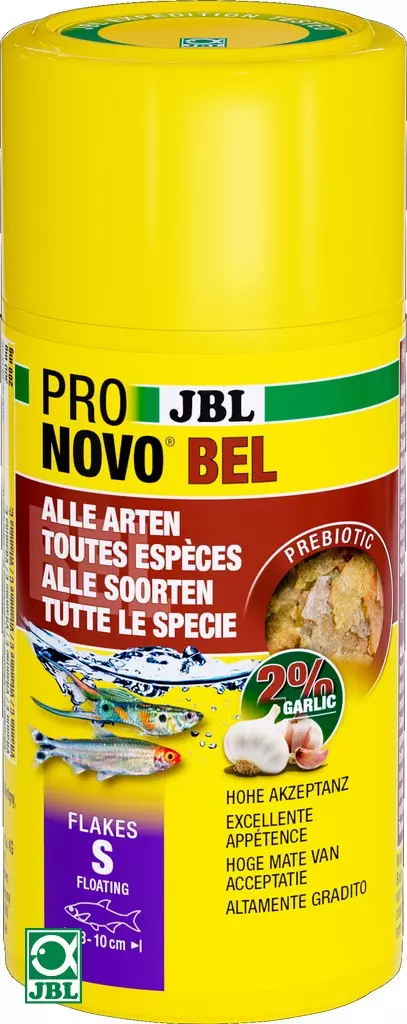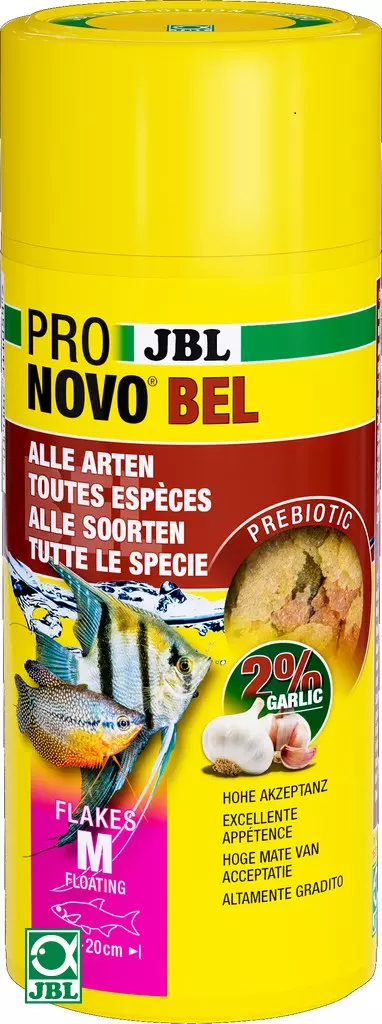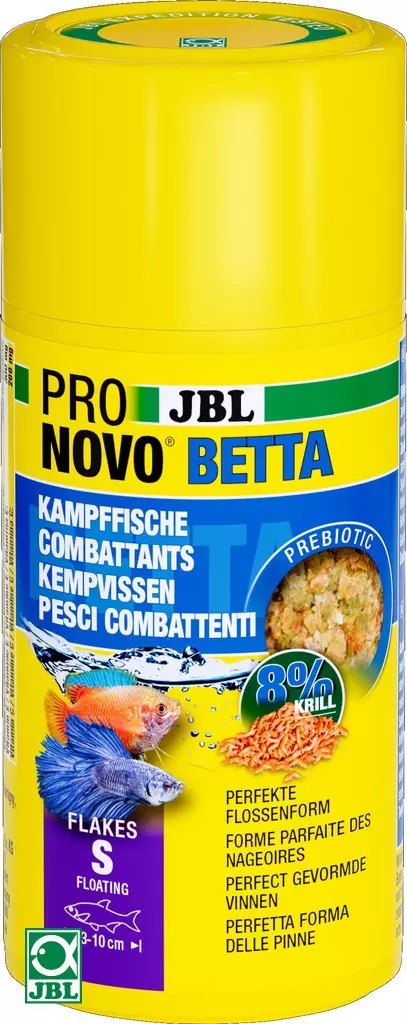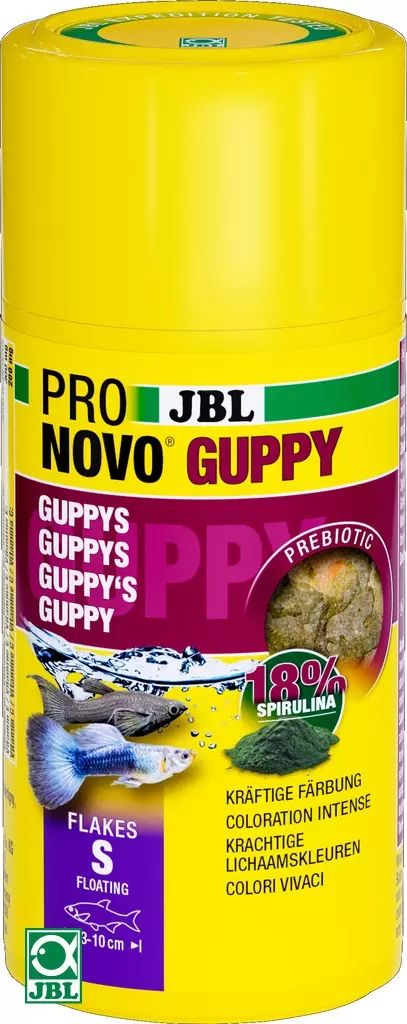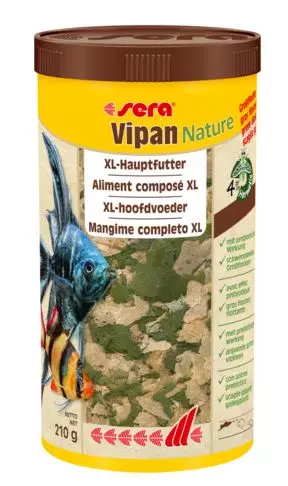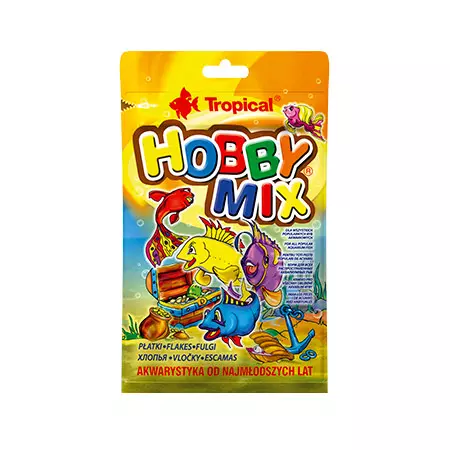

CHF 8.90
Stock: 13
Available, delivery time: 1-3 days

JBL PRONOVO BEL FLAKES BABY
complete nutrition, optimal growth and beautiful colors thanks to Artemia crustaceans. Dust food for fry of all aquarium fishes.
Nutritious and easily digestible: ideal nutrient composition for all baby aquarium fish from 5 to 10 mm in size
No water turbidity: Reduced algae growth due to adjusted phosphate content, better water quality due to improved digestibility of the food, reducing fish excretion
Natural raw materials without artificial additives for a natural diet and healthy aquarium fish
Scope of delivery: original sealed, airtight and light-proof, recyclable tin with dosing lid as feeding aid
The composition of the ideal growth food for young fish depends on many factors. The young fish are growing and need important nutrients for development. Vital vitamins and the bioelement inositol are needed to strengthen the immune system. With young fish it is essential that the food size fits the mouth size. It is better to feed a feed that is too small than a feed that is too large! The appropriate phosphate content of the feed is essential for healthy bone formation. Too little phosphate and calcium will lead to bone deformities. When the young fish are large enough, supplementation with live Artemia (brine shrimp) is ideal. JBL offers a complete program for this = JBL Artemio.
In the case of fry, a distinction is made between the fry of egg-laying and live-bearing species. After hatching, the young fish of egg-laying species are considerably smaller and first feed on infusoria (microorganisms) which they find in their environment. Many species then also accept liquid food (JBL PRONOVO BEL FLUID). Shortly afterwards they accept fine dust food (JBL PRONOVO BEL BABY TOM or the dust food from the first tin of the JBL PRONOVO BABY set). As soon as they have grown again a little, you can change to the 2nd can of JBL PRONOVO BABY. If the parents are brooders (e.g. cichlids), a long pipette or a piece of hose helps to bring the food dissolved in water specifically to the young fish. In the case of egg-laying or even mouth-breeding species, the young fish are larger and immediately eat the food from the second can of JBL PRONOVO BABY and live Artemia (JBL Artemio System).
A head start through research Results of JBL research expeditions, together with the knowledge of the JBL research and development team, resulted in optimal, balanced food mixtures made from high-quality ingredients.
0 of 0 reviews
Login
Customers also bought
Similar products
Customers also viewed



